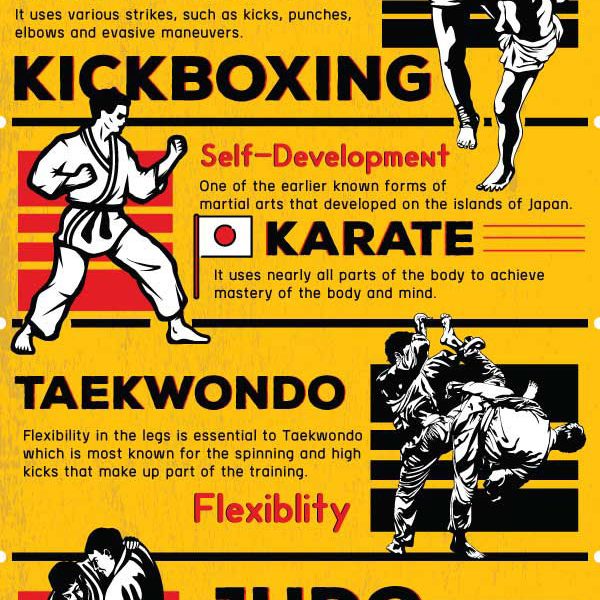Debunking The Different Martial Arts Styles: From Martial Arts To Taekwondo
Debunking The Different Martial Arts Styles: From Martial Arts To Taekwondo
Blog Article
Produced By-Haugaard Joseph
Are you tired of feeling bewildered by the vast world of fighting styles? With a lot of designs to select from, it can be simple to get lost in a sea of strikes, kicks, and mysterious names. But anxiety not!
This conversation will certainly debunk the different martial arts styles, taking you on a trip from the powerful strikes of Martial arts to the vibrant kicks of Taekwondo. Prepare yourself to reveal the beginnings, techniques, and ideologies behind these ancient art types.
So, tighten your belt and prepare to start an enlightening exploration right into the captivating globe of martial arts.
Origins of Martial Arts Styles
The beginnings of martial arts designs can be traced back to ancient worlds and their demand for protection and combat methods. Throughout background, different societies established their very own one-of-a-kind methods of fighting, each with its very own collection of strategies and viewpoints.
In China, for instance, martial arts styles such as Kung Fu and Tai Chi were developed as a means of self-defense and boosting physical and psychological well-being.
In Japan, the samurai warriors produced styles like Martial arts and Judo, focusing on discipline, accuracy, and mastery of the body.
Similarly, in Korea, Taekwondo became a martial art stressing high kicks, fast movements, and mental stamina.
These very early worlds laid the foundation for the diverse selection of martial arts designs that exist today, each with its very own rich background and social significance.
Techniques and Educating Approaches
To master martial arts designs, professionals should find out different strategies and training techniques.
Strategies are the details movements and activities made use of in battle, such as strikes, kicks, throws, and blocks. Different fighting styles styles have their own unique set of methods that experts have to understand via strenuous training.
Educating approaches differ relying on the design, yet they normally entail a mix of physical conditioning, drills, competing, and types.
Physical fitness is vital to build stamina, flexibility, and endurance. Drills help practitioners improve their strategies and improve their rate and accuracy.
Competing enables professionals to practice their techniques in a regulated, reasonable atmosphere. Types, likewise called kata, are ironclad sequences of movements that assist professionals develop muscle mass memory and focus.
Approaches and Principles
Discovering the viewpoints and concepts of fighting styles styles can offer you with a deeper understanding of your chosen discipline. Each martial art has its own distinct approach and set of assisting principles that form the means it's exercised.
For example, Martial arts emphasizes self-control, regard, and self-discipline. It educates practitioners to concentrate their body and minds, allowing them to protect themselves while preserving a sense of internal peace.
On martial arts lessons for adults , Taekwondo puts a strong emphasis on rate, dexterity, and flexibility. most effective martial arts are rooted in the tenets of politeness, stability, willpower, self-discipline, and indomitable spirit.
Final thought
Since you've checked out the origins, methods, and philosophies of various fighting styles designs, you have a deeper understanding of these old disciplines.
Envision a young karate student, practicing with steady resolution and emphasis, breaking through boards with a powerful punch.
Their journey showcases the dedication and strength needed to understand a martial art, reminding us that with discipline and determination, anything is feasible.
